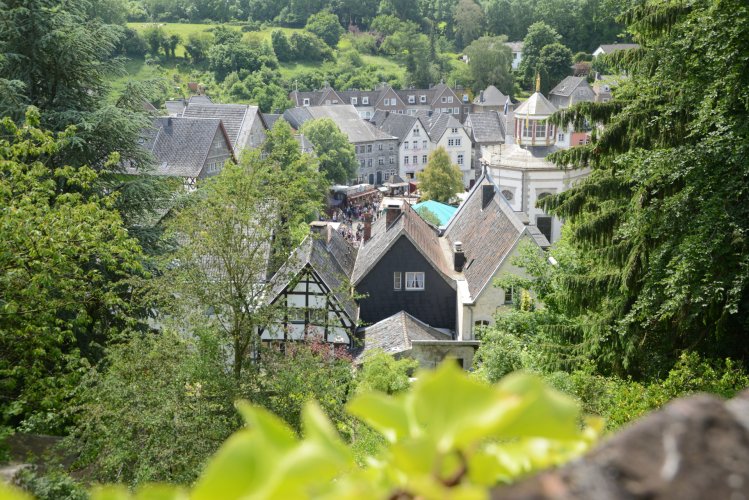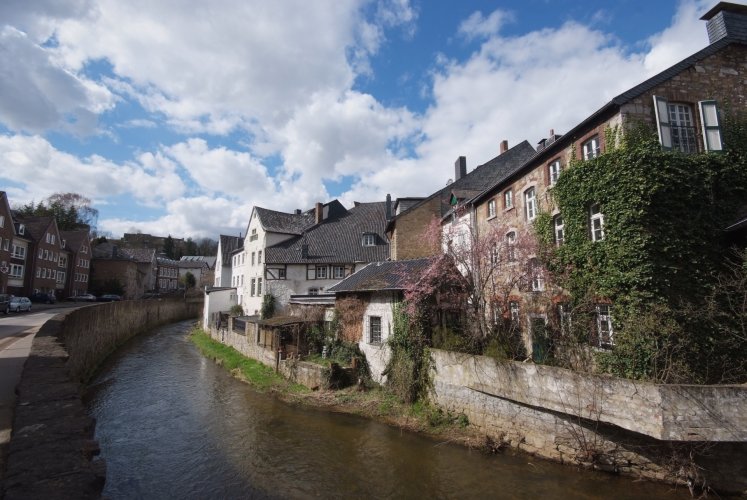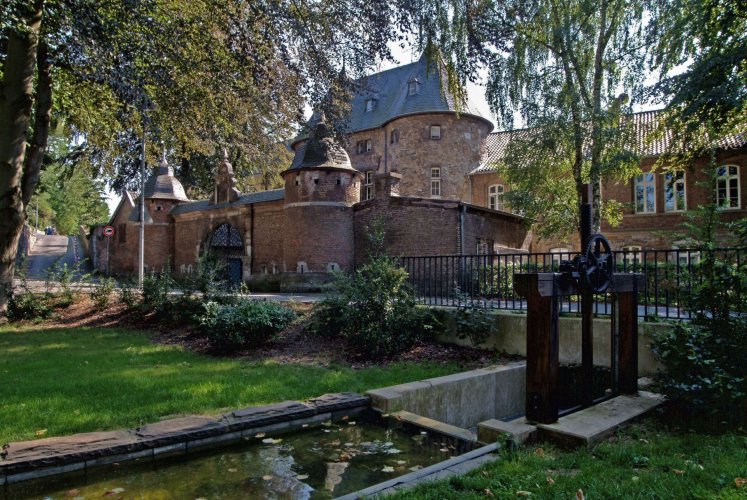
Historical facts about Kornelimünster
The historic center of Kornelimünster dates back to the founding of the monastery complex in 814. The preserved buildings, which were largely spared from the world wars, are a vivid example of a settlement that grew up around an imperial abbey over the centuries.
As a Benedictine monastery, pilgrimage destination and imperial abbey, Kornelimünster was an important place of religion and thus a spiritual, intellectual and economic supra-regional center for centuries.
There is evidence that the area around Kornelimünster was settled very early on. From Neolithic times, the area around Kornelimünster was frequented by people and has been used since prehistoric times. In Roman times, two military roads led right through the Münsterländchen to Cologne and Jülich. Traces of the Roman presence are still visible today in the Gallo-Roman temple district of Varnenum - a historical cult site of particular importance.
The Benedictine monastery of Inda, later the imperial abbey of Kornelimünster, founded in 814 under Louis the Pious, is of outstanding importance. Abbot Benedict of Aniane founded a Benedictine monastery with the name "Monasterium ad Indam", the monastery on the Inde. The abbey's first church burned down in 1310 and was subsequently rebuilt under the influence of Cologne. It was given late Gothic extensions up to five naves.
The abbots in Kornelimünster were secular and ecclesiastical princes who were only subject to the emperor in terms of territorial authority. Kornelimünster was therefore not only the abbey but also the seat of a regional government. Pasture farming, agriculture and forestry as well as the iron and limestone industry associated with the use of water power formed the economic basis of the abbey alongside pilgrimages. Historically, the territory of the abbey, the so-called "Münsterländchen", comprised the villages of Büsbach, Brand, Breinig, Dorff, Hahn, Krauthausen, Münsterbusch, Venwegen and Walheim. The continuous rule of the abbey over the centuries was of great importance for the entire cultural and economic development of the area. The spacious abbey buildings from the 18th century indicate its importance as a central location in the Münsterland region.
From 817 onwards, relics established the importance of Kornelimünster as a place of pilgrimage. Around the middle of the 9th century, the skull relic of St. Pope Cornelius came into the possession of the monastery. This led to the establishment of the annual Cornelian Octave and in the 12th century, with the veneration of St. Cornelius, to the change of patronage and name to "Kornelimünster". The shrines made Kornelimünster an important place of pilgrimage. Every seven years, the shrine pilgrimages take place here, parallel to Aachen.
In the course of secularization, the monastery is converted into a parish church, factory, teachers' seminar, local history museum and state archives. Parts of the monastery garden are converted into a public square, the Korneliusmarkt.

Kornelimünster monument area
The monument area statutes have created a framework that ensures that future changes are harmonized and compatible with the existing historic buildings.
The preservation of the historic center of Kornelimünster in the midst of an important historic cultural landscape as a vivid example of a settlement that has grown over centuries around an imperial abbey is to be ensured by the monument area statutes.
Templates for the resolution on the articles of association can be found under "Other topics": District 02.09.20, PLA 10.09.20 and Council 16.09.20
Protection goals of the statutes
- Preservation of the medieval town center with its buildings and structures
- Site silhouette and roof view - Visual axes
- Embedding in the landscape
The monument area is divided into two zones: the village center and an outer area - the integration of the village into the landscape.
Town center
It comprises the abbey with the adjoining settlement. The closely-spaced buildings with an urban character consist of exceptionally high-quality buildings whose design and substance vividly convey the history of the valley. The town center is characterized by a high number of monuments and dense historical substance with numerous architectural details. The historic buildings set the standard for future building developments and structural changes.
Integration into the surrounding landscape (outer area)
The historic town center, protected by undeveloped slopes, including the hill with the original parish church of St. Stephanus, lies in a bend of the Inde River. The church dominates the townscape due to its location. The valley location of Kornelimünster justifies the special protection of the historic roofscape and the silhouette of the town center.
The monument area statute is a predominantly conservative stipulation. The existing historical structure and building substance should serve as a benchmark for future developments.
What does that mean?
The following measures are subject to approval in the town center:
All measures that have an impact on the exterior are subject to approval in order to protect and preserve the special quality of the historic town center.
These are in detail:
- Changes to buildings and their immediate surroundings
- Change in the plot structure
- Changes to the tangible outdoor space with its streets, paths, squares, open spaces, gardens and courtyards
The following measures are subject to approval in the outer area - integration into the surrounding landscape:
- Construction of buildings
- Extension and alteration of existing buildings that affect the appearance of the town center
- Change in open spaces
